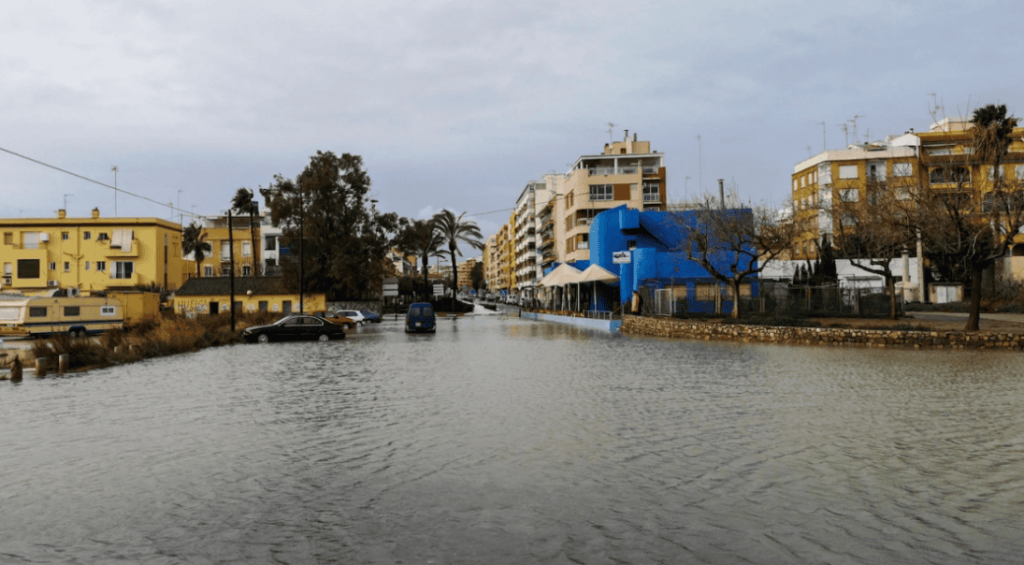Floods are becoming more common and costly as a result of climate change. This column uses localised data from three European countries to identify the financial impact of flooding on small and medium-sized enterprises, an important channel beyond the immediate impact on physical capital. The authors find that flood risk increases lending costs for such firms and that the perceptions of flood risk only increase after large flooding incidents. Importantly, they also identify that flood events increase the risk of the firms defaulting on their loans, both during the flood event and for loans taken out in the immediate aftermath.
Climate-related natural hazards are becoming more frequent and severe as global temperatures rise. Floods are among the most damaging natural disasters in Europe, where their economic and social costs have already been material (European Environment Agency 2022). While the increase in flood risk at the European scale is substantial, its impact on firms’ financial conditions is not fully understood.
Beyond direct losses, flooding inflicts indirect financial costs: flood risk is capitalised into the value of real and financial assets (Giglio et al. 2021), and business disruptions may impede borrowers’ ability to repay outstanding debt. This financial strain can spill over to the banking sector. Furthermore, natural hazards likely have a localised impact (Mamonov et al. 2024), thus making smaller firms especially vulnerable given their dependence on domestic credit and limited capacity to share risks through capital markets.
In a recent paper (Barbaglia et al. 2024), we provide novel insights on physical climate risk as a source of financial vulnerability for small and medium-sized firms (SMEs), and for the banks that finance them. Our analysis combines data on securitised SME loans with information on historical flood events and flood risk for three euro area countries – Belgium, Italy, and Spain. The flood risk indicator, available from the Risk Data Hub of the European Commission’s Joint Research Centre (Faiella et al. 2020), compounds metrics that capture both exposure and vulnerability to hypothetical hazards characterised by different frequency and intensities. Besides the severity of the natural hazards, exposure accounts for geolocalised information on physical assets, while vulnerability subsumes the deficiencies or lack of capacity of the exposed elements to withstand the natural hazards.
Figure 1 provides a graphical representation of flood risk for commercial buildings across NUTS3 counties, with darker shades corresponding to higher levels of the risk indicator, which is normalised on a scale of 0 to 10.
Figure 1 Flood risk


Note: The figure shows the map of flood risk across counties (NUTS3 units). The flood risk indicator compounds both exposure and vulnerability to hypothetical flooding. It is averaged across the projections years (i.e. 1, 2, 5, 10, 15 and 25 years) and normalised within country over the [0, 10] scale. Low (high) values indicate low (high) flood risk. For counties in grey the indicator is not available.
Our analysis addresses several related questions. First, we inquire whether physical risk is priced into small business loans. Exploiting local variation in the exposure and vulnerability to flooding, we show that banks charge higher interest rates on credit to firms in counties at high risk of flooding. In this respect, our findings complement recent evidence on the pricing of transition risk in corporate loans extended by euro area banks (Altavilla et al. 2023), as well as evidence on the pricing of physical risk in large syndicated loans to US corporates (Correa et al. 2022, Jiang et al. 2023). At 6.4 basis points on average, the risk premium increases for smaller borrowers and with longer loan maturities, and turns sizeable in the case of local specialised lenders such as cooperative and savings banks. The reliance on tangible and movable assets is an important driver of the flood risk premium. Moreover, we do not find evidence that recent flooding changes the perception and assessment of flood risk, and hence the size of the risk premium, except when severe episodes are considered. Hence, severe events make flood risk more salient for lenders, arguably as they unveil the full extent of its implications for credit risk in the presence of direct economic losses.
Second, we ask whether flood events have an impact on loan performance. Using survival analysis, we document that flooding is an important risk factor for loan delinquency. First, there is a direct channel whereby the occurrence of water hazards worsens firms’ ability to fulfil their debt obligations. Firms exposed to a flood are more likely to incur in delays in debt repayments, and to default on their loans, than firms in non-disaster areas. The higher loan default probabilities materialise even two years after the hazard, consistent with evidence that the deterioration of firm performance brought about by flooding is rather persistent (Fatica et al. 2023). Moreover, we also uncover an indirect channel whereby loans originated in the aftermath of flood episodes are more likely to end up in arrears and, eventually, default. This result holds even as we account for the occurrence of floods during the loan lifetime. This intrinsic fragility suggests that banks engage in excessive risk-taking or relax their credit standards when they grant post-disaster recovery lending.
Our results indicate that flooding affects businesses not only through direct physical damage, but also by worsening their financial conditions, notably by jeopardising their ability to service debt and by increasing their cost of capital. While the full impact of climate change is only expected to materialise in the long run (Pörtner et al. 2022), climate-related disasters and extreme weather events may have disruptive consequences on firm operations in the short and medium term, not only in a direct way through the destruction of physical capital but also through the financial channel. This effect is exacerbated by the high reliance of European SMEs on bank funding, and their limited access to capital markets, which reduces the possibility of substituting away from bank credit for alternative sources of finance. Survey evidence confirms that SMEs in the euro area find access to finance rather problematic to fund investment to address climate risks (Ferrando et al. 2023).
Ultimately, climate risk is acting as an amplifier of existing SME vulnerabilities, stemming from both the lack of preparation for, and limited resources to weather, the effects of natural hazards. For banks, climate risk compounds existing risk categories such as credit and market risks, and calls for adequate and comprehensive risk management frameworks (Hiebert 2024). More broadly, our findings point to the importance of policies that mitigate the disruptive effects of climate change on the real economy (Bilal and Rossi-Hansberg 2023) and the financial sector, and help to identify, monitor and report on the underlying risks.
Source : VOXeu



































































